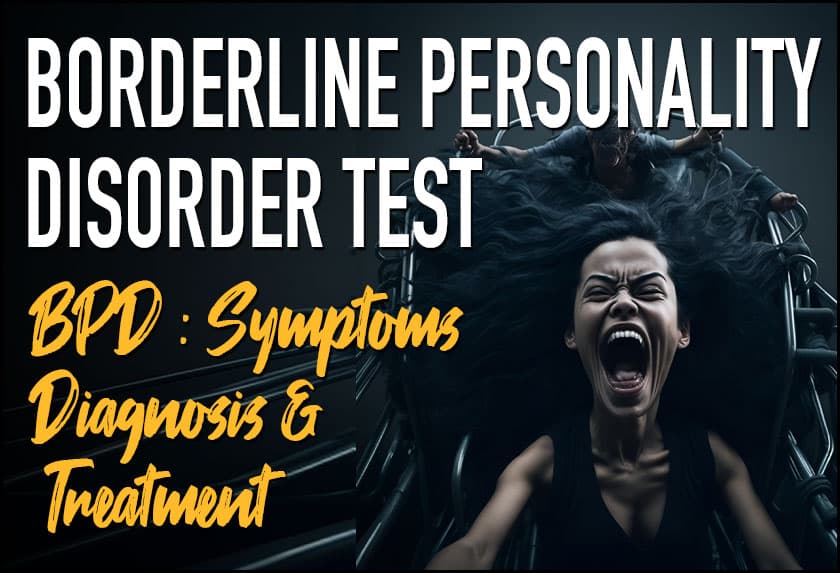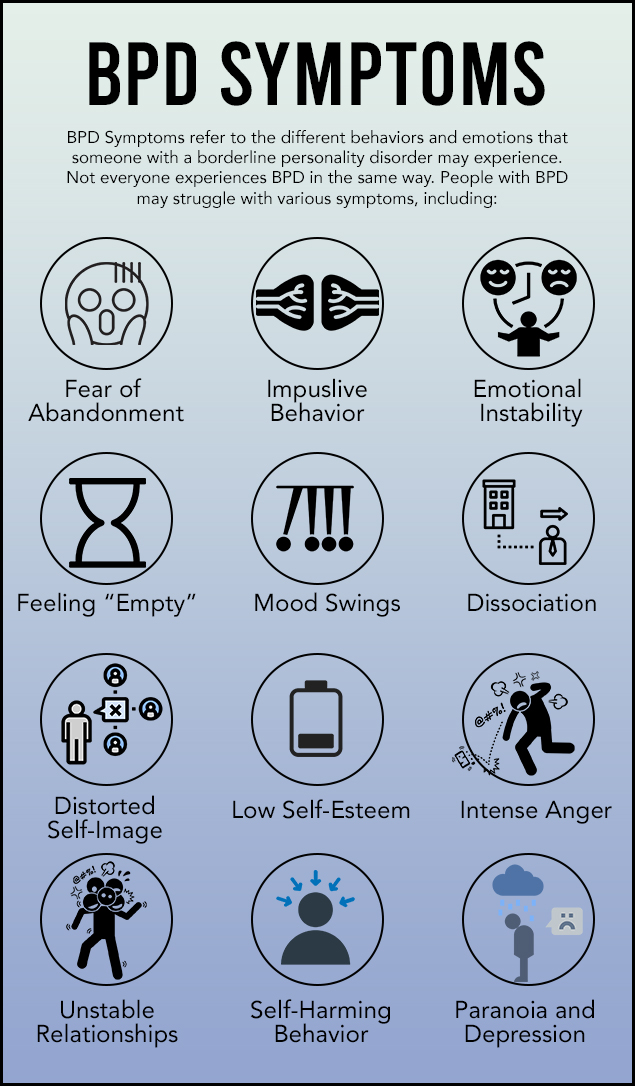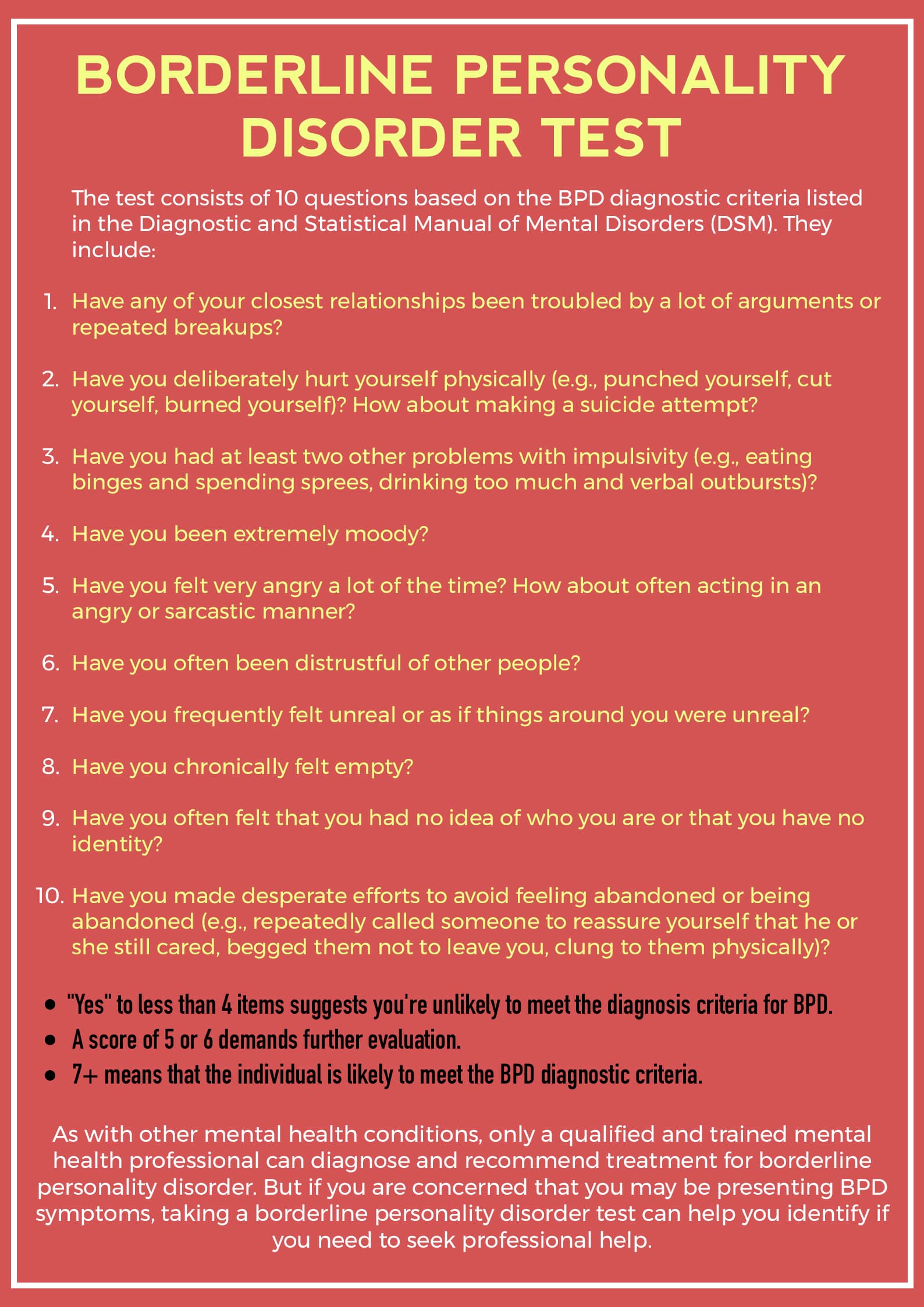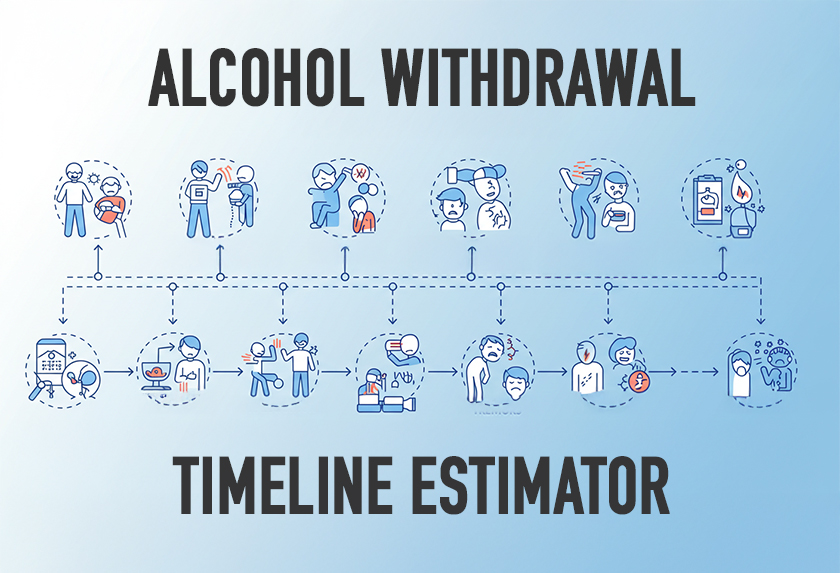BPD is a mental health condition characterized by extreme fluctuations in mood and difficulties in regulating emotions. It poses a number of risks to the individual, including self-harm and suicidal behavior. If you think you may have BPD, taking a borderline personality disorder test can help you identify if you need to seek professional help.
Struggling with intense emotional swings, unstable interpersonal relationships, impulsivity, difficulty controlling your anger, and a distorted sense of self?
We all experience ups and downs with regard to our feelings, ways of thinking, and behavior. But when your ‘traits’ become problematic, you may start to wonder where there’s something more. Perhaps you’re displaying borderline personality disorder (BDP) symptoms.
BPD Meaning
What is borderline personality disorder? Well, imagine feeling like you’re on an emotional roller coaster, with intense mood swings that can shift from anger to sadness to euphoria in a matter of minutes. That’s what it can be like for someone with BPD—a condition that is estimated to affect 1.4% of the United States adult population.
BPD meaning: borderline personality disorder is a mental health disorder affecting how a person thinks, feels, and interacts with others. It’s a serious condition that can cause a lot of distress and dysfunction in a person’s life.
People with BPD often have a fear of abandonment and may go to great lengths to avoid it. They may also have a hard time regulating their emotions, which can lead to impulsive behaviors, like binge eating, drug use, or reckless driving.
It’s worth noting that it’s been suggested that there are sub-types of borderline personality disorder. “Quiet” or “high functioning” BPD is one such sub-type that reflects the idea that some individuals may direct their BPD symptoms inwards – i.e., without letting others notice.
By not showing their symptoms, people with high-functioning borderline personality disorder can still cope with everyday situations with little-to-no hint of a mental health condition.
PS: Contrary to some assumptions, BPD is not a choice, a personal weakness, a character flaw, or something that the person can just snap out of at will. It’s a real, diagnosable mental health condition that requires professional help to manage. But with the right treatment, people with BPD can lead fulfilling and satisfying lives—and this starts with a BPD test.
BPD Symptoms
BPD Symptoms refer to the different behaviors and emotions that someone with a borderline personality disorder may experience. Not everyone experiences BPD in the same way. People with BPD may struggle with various symptoms, including:
- Fear of Abandonment: People with BPD may make frantic efforts to avoid real or imagined abandonment by friends and family.
- Impulsive Behavior: People with BPD may struggle with impulsivity, which means they like to do things on the spur of the moment. This can have dangerous outcomes, such as excessive spending, unsafe sex, reckless driving, or misuse or overuse of substances.
- Emotional Instability: Individuals with BPD may have difficulty controlling their emotions and may experience intense emotional reactions to everyday situations.
- Feeling “Empty”: Individuals with BPD may experience a feeling of “emptiness,” which can be difficult to describe or understand. They may struggle to find meaning or purpose in their lives.
- Mood swings: BPD may lead to intense and rapidly shifting mood swings, including periods of intense depressed mood, irritability, or anxiety lasting a few hours to a few days.
- Dissociation: People with BPD may feel disconnected from their thoughts, sense of identity, and the world around them.
- Distorted Self-Image: BPD can cause a distorted and unstable self-image, which affects moods, values, opinions, goals, and relationships. People with the condition may experience sudden shifts in how they perceive themselves and their place in the world.
- Low Self-Esteem: People who present this BPD symptom may feel bad about themselves and struggle with feelings of inadequacy and self-doubt.
- Intense Anger: They may exhibit inappropriate, intense, or uncontrollable anger, often followed by shame and guilt.
- Unstable Relationships: Individuals with BPD may struggle to maintain stable relationships with others, often experiencing intense but unstable connections. They may alternate between idealizing someone (“I’m so in love!”) and devaluing them (“I hate that person”). This behavior is sometimes known as “splitting.”
- Self-Harming Behavior: People with BPD may engage in self-harming behaviors as a way of coping with intense emotions. This may include suicidal threats or attempts.
- Paranoia and Depression: In some cases, those with a borderline personality disorder may experience intense feelings of paranoia or depression
If you or someone you know is experiencing any of these BPD symptoms, it’s essential to take a high-functioning borderline personality disorder test and seek help from a mental health professional.
Borderline Personality Disorder Test
As with other mental health conditions, only a qualified and trained mental health professional can diagnose and recommend treatment for borderline personality disorder.
But if you are concerned that you may be presenting BPD symptoms, taking a borderline personality disorder test can help you identify if you need to seek professional help. Self-screening tools can help track your moods and be a valuable resource during treatment by showing how your BPD symptoms change over time.
Several BPD tests are available to help you assess your symptoms and determine if you should see a mental health professional. The McLean Screening Instrument is one of the most common and widely-accepted borderline personality disorder tests.
As the name implies, the McLean Screening Instrument for Borderline Personality Disorder (MSI-BPD) was developed by a team of experts at McLean Hospital. It is a well-validated and widely-used BPD test that has illustrated relatively satisfactory reliability and validity.
It consists of 10 questions based on the BPD diagnostic criteria listed in the Diagnostic and Statistical Manual of Mental Disorders (DSM). They include:
- Have any of your closest relationships been troubled by a lot of arguments or repeated breakups?
- Have you deliberately hurt yourself physically (e.g., punched yourself, cut yourself, burned yourself)? How about making a suicide attempt?
- Have you had at least two other problems with impulsivity (e.g., eating binges and spending sprees, drinking too much and verbal outbursts)?
- Have you been extremely moody?
- Have you felt very angry a lot of the time? How about often acting in an angry or sarcastic manner?
- Have you often been distrustful of other people?
- Have you frequently felt unreal or as if things around you were unreal?
- Have you chronically felt empty?
- Have you often felt that you had no idea of who you are or that you have no identity?
- Have you made desperate efforts to avoid feeling abandoned or being abandoned (e.g., repeatedly called someone to reassure yourself that he or she still cared, begged them not to leave you, clung to them physically)?
If you answer are:
- “Yes” to less than 4 items in the MSI-BPD, it suggests you’re unlikely to meet the diagnosis criteria for BPD.
- A score of 5 or 6 demands further evaluation
- 7+ means that the individual is likely to meet the BPD diagnostic criteria.
PLEASE NOTE: MSI-BPD is NOT a diagnostic tool! It’s merely a paper-and-pencil screening tool designed to help determine the likelihood of borderline personality disorder. Screening tools are like stepping stones to an actual diagnosis by a qualified healthcare professional. MSI-BPD helps establish the need for further evaluation and treatment and should never be used alone for diagnosis.
How is BPD Diagnosed?
If you are experiencing symptoms that you believe may be indicative of borderline personality disorder, it is crucial to seek professional help from a licensed clinician such as a therapist or doctor.
While high-functioning borderline personality disorder tests can give you a good picture of your situation, a thorough and accurate diagnosis is essential. This is especially important, considering several other medical problems and psychological disorders can produce similar symptoms.
To accurately diagnose BPD, clinicians typically perform a comprehensive evaluation that may comprise a series of components, including:
- An Interview: Your therapist or doctor may first ask you to participate in an interview, during which they will ask about your symptoms, physical health, and past and present life situations. Honesty is key in helping your clinician obtain a complete and accurate picture of your situation.
- Questionnaires: Your clinician may also ask you to complete a written questionnaire to assess your BPD symptoms. This questionnaire can provide further insight into your condition and help your clinician make an accurate diagnosis.
- Evaluating for Co-Occurring Conditions: Your clinician needs to rule out similar conditions and evaluate your symptoms to determine if you are experiencing a co-occurring condition. According to the National Institute of Mental Health, 84.5% of people with personality disorders also have another mental health condition. Some of these co-occurring disorders include anxiety disorders (60.5%), impulse control disorders (49.0%), substance use disorders (38.2%), and mood disorders (34.3%).
- Talking to Family or Loved Ones: The mental health professional may also ask to speak with your family members or loved ones to gain a deeper understanding of how your symptoms affect you and your social life.
- Standardized Tests: Your clinician may also use standardized borderline personality disorder tests to diagnose BPD and evaluate the severity of your symptoms.
After compiling the necessary information, your clinician will make an accurate diagnosis and discuss potential treatment options with you. It is important to remember that BPD is treatable, and there are many effective treatment options available.
Borderline Personality Disorder Treatment
Seeking treatment for BPD can significantly improve an individual’s quality of life and reduce the risk of complications. But while there is hope for those who seek treatment, a lot needs to be done to raise awareness of the condition.
It is estimated that less than half (42.4%) of people with borderline personality disorder receive treatment in a year. While this figure is higher than the average of all personality disorders (39%), it still represents an unmet need.
People with BPD who don’t receive appropriate treatment may face higher risks of developing other medical or mental illnesses, such as depression, anxiety disorders, substance abuse disorders, and eating disorders.
BPD awareness is also particularly important in light of the link between BPD and self-harm or suicide. The right treatment can help reduce self-harming behaviors and lower the number of emergency room visits related to suicidal behavior.
We can raise awareness of the issue through movies about borderline personality disorder, sharing BPD information on social media, partnering with mental health organizations, joining support groups for people with BPD, or participating in local events about mental health awareness. The goal is to ensure more people get the help they need.
Many people who find they have BPD symptoms from a high-functioning borderline personality disorder test and clinical diagnosis by a qualified mental health professional can get help from therapy sessions at their practitioner’s office. Therapy can be done individually or in a group setting. It may involve various types of approaches, such as Cognitive Behavioral Therapy (CBT), Dialectical Behavioral Therapy (DBT), etc.
But it is essential to note that BPD treatment is not a one-size-fits-all solution. The severity of the symptoms, the individual’s background, and their preferences are usually considered when determining the best treatment plan.
Take a BPD Test
Taking a borderline personality disorder test can be crucial to understanding and managing your mental health. While the test results can be daunting, it’s essential to remember that a diagnosis doesn’t define you.
You can learn to manage your emotions, improve your relationships, and lead a happier, more productive, and more fulfilling life by seeking the right treatment and supportive care.
So if you or a loved one suspects that you may be struggling with BPD, it’s important to seek professional help. Start your journey towards recovery with a BPD test.







